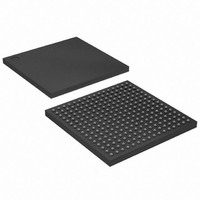XC3S250E-4FTG256C Xilinx Inc, XC3S250E-4FTG256C Datasheet - Page 32

XC3S250E-4FTG256C
Manufacturer Part Number
XC3S250E-4FTG256C
Description
IC SPARTAN-3E FPGA 250K 256-FTBG
Manufacturer
Xilinx Inc
Series
Spartan™-3Er
Datasheet
1.XC3S100E-4VQG100C.pdf
(233 pages)
Specifications of XC3S250E-4FTG256C
Total Ram Bits
221184
Number Of Logic Elements/cells
5508
Number Of Labs/clbs
612
Number Of I /o
172
Number Of Gates
250000
Voltage - Supply
1.14 V ~ 1.26 V
Mounting Type
Surface Mount
Operating Temperature
0°C ~ 85°C
Package / Case
256-LBGA
No. Of Logic Blocks
5508
No. Of Gates
250000
No. Of Macrocells
5508
No. Of Speed Grades
4
No. Of I/o's
190
Clock Management
DLL
Lead Free Status / RoHS Status
Lead free / RoHS Compliant
Other names
122-1482
Available stocks
Company
Part Number
Manufacturer
Quantity
Price
Company:
Part Number:
XC3S250E-4FTG256C
Manufacturer:
TOS
Quantity:
3 012
Company:
Part Number:
XC3S250E-4FTG256C
Manufacturer:
XILINX
Quantity:
281
Part Number:
XC3S250E-4FTG256C
Manufacturer:
ALTERA/阿尔特拉
Quantity:
20 000
Functional Description
Initialization
The CLB storage elements are initialized at power-up, dur-
ing configuration, by the global GSR signal, and by the indi-
vidual SR or REV inputs to the CLB. The storage elements
can also be re-initialized using the GSR input on the
STARTUP_SPARTAN3E primitive. See
(STARTUP_SPARTAN3E).
Table 17: Slice Storage Element Initialization
32
SR
REV
GSR
Signal
Set/Reset input. Forces the storage element
into the state specified by the attribute SRHIGH
or SRLOW. SRHIGH forces a logic “1” when SR
is asserted. SRLOW forces a logic “0”. For each
slice, set and reset can be set to be
synchronous or asynchronous.
Reverse of Set/Reset input. A second input
(BY) forces the storage element into the
opposite state. The reset condition is
predominant over the set condition if both are
active. Same synchronous/asynchronous
setting as for SR.
Global Set/Reset. GSR defaults to active High
but can be inverted by adding an inverter in
front of the GSR input of the
STARTUP_SPARTAN3E element. The initial
state after configuration or GSR is defined by a
separate INIT0 and INIT1 attribute. By default,
setting the SRLOW attribute sets INIT0, and
setting the SRHIGH attribute sets INIT1.
Description
Global Controls
www.xilinx.com
Distributed RAM
For additional information, refer to the “Using Look-Up
Tables as Distributed RAM” chapter in UG331.
The LUTs in the SLICEM can be programmed as distributed
RAM. This type of memory affords moderate amounts of
data buffering anywhere along a data path. One SLICEM
LUT stores 16 bits (RAM16). The four LUT inputs F[4:1] or
G[4:1] become the address lines labeled A[4:1] in the
device model and A[3:0] in the design components, provid-
ing a 16x1 configuration in one LUT. Multiple SLICEM LUTs
can be combined in various ways to store larger amounts of
data, including 16x4, 32x2, or 64x1 configurations in one
CLB. The fifth and sixth address lines required for the
32-deep and 64-deep configurations, respectively, are
implemented using the BX and BY inputs, which connect to
the write enable logic for writing and the F5MUX and
F6MUX for reading.
Writing to distributed RAM is always synchronous to the
SLICEM clock (WCLK for distributed RAM) and enabled by
the SLICEM SR input which functions as the active-High
Write Enable (WE). The read operation is asynchronous,
and, therefore, during a write, the output initially reflects the
old data at the address being written.
The distributed RAM outputs can be captured using the
flip-flops within the SLICEM element. The WE write-enable
control for the RAM and the CE clock-enable control for the
flip-flop are independent, but the WCLK and CLK clock
inputs are shared. Because the RAM read operation is
asynchronous, the output data always reflects the currently
addressed RAM location.
A dual-port option combines two LUTs so that memory
access is possible from two independent data lines. The
same data is written to both 16x1 memories but they have
independent read address lines and outputs. The dual-port
function is implemented by cascading the G-LUT address
lines, which are used for both read and write, to the F-LUT
write address lines (WF[4:1] in
ing the G-LUT data input D1 through the DIF_MUX in
Figure 15
vides a 16x1 dual-port memory as shown in
Any write operation on the D input and any read operation
on the SPO output can occur simultaneously with and inde-
pendently from a read operation on the second read-only
port, DPO.
and to the D1 input on the F-LUT. One CLB pro-
DS312-2 (v3.8) August 26, 2009
Figure
Product Specification
15), and by cascad-
Figure
26.
R

















